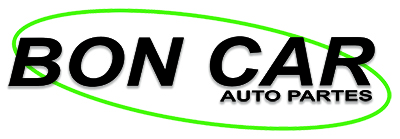To calculate the depreciation of an asset, an asset’s salvage value is deducted from its purchase price the difference is then divided by the estimated useful years of the asset. Business owners use straight line depreciation to write off the expense of a fixed asset. The straight line method of depreciation gradually reduces the value of fixed or tangible assets by a set amount over a specific period of time. Only tangible Bookkeeping for attorneys assets, or assets you can touch, can be depreciated, with intangible assets amortized instead. With the double-declining balance method, higher depreciation is posted at the beginning of the useful life of the asset, with lower depreciation expenses coming later. This method is an accelerated depreciation method because more expenses are posted in an asset’s early years, with fewer expenses being posted in later years.
The straight-line method is the most common method used to record depreciation. This article defines and explains how to calculate straight-line depreciation. In addition to this, learn more about ways to calculate the expense, and how depreciation impacts financial statements.
Real property
By estimating depreciation, companies can spread the cost of an asset over several years. The straight-line depreciation method is a simple and reliable way small business owners can calculate depreciation. Straight-line depreciation posts the same amount of expenses each accounting period (month or year). But depreciation using DDB and the units-of-production method may change each year.
The payments will be equal for each period until the end of the lease.. Depreciation does not impact cash, so the cash flow statement doesn’t include cash outflows related to depreciation. Using the furniture example, we can see the journal entry the business would use to record each year of depreciation. “Cost of the asset” refers to the amount you paid to purchase the asset.
Free Straight-Line Depreciation Template
Thus, Company X only needs to expense $950 instead of writing off the asset’s full cost in the current accounting period, which is what would happen under the cash basis of accounting. Furthermore, the company will continue to expense $950 annually until the book value of the asset reaches the salvage value of $1,500. Every business needs assets to generate revenue, and most assets require business owners to post depreciation. https://personal-accounting.org/how-to-start-a-bookkeeping-business-in-9-steps/ Use this discussion to understand how to calculate depreciation and the impact it has on your financial statements. Taking a step back, the concept of depreciation in accounting stems from the purchase of fixed assets (PP&E) via capital expenditures (Capex). The straight-line depreciation method is characterized by the reduction in the carrying value of a fixed asset recorded on a company’s balance sheet in equal installments.
- After dividing the $1 million purchase cost by the 20-year useful life assumption, we arrive at $50k for the annual depreciation expense.
- This method often is used if an asset is expected to lose greater value or have greater utility in earlier years.
- Note that the straight depreciation calculations should always start with 1.
- These numbers can be arrived at in several ways, but getting them wrong could be costly.
- Fortunately, they’ll balance out in time as the so-called tax timing differences resolve themselves over the useful life of the asset.
Under this method, the annual depreciation is determined by multiplying the depreciable cost by a schedule of fractions. Companies use depreciation and amortization to expense an asset over a long period of time, as opposed to deducting the full cost of the asset in the period it was purchased. The straight line basis simply allocates the expense equally into each period of its useful life, which smooths the expense and ultimately net income. Depreciation and amortization are the conventions companies use to attain the matching objective.
Want More Helpful Articles About Running a Business?
This method calculates annual depreciation based on the percentage of total units produced in a year. Let’s assume that a business buys a machine with a $50,000 purchase price and a $10,000 salvage amount. The business’s use of the machine fluctuates greatly, according to production levels.
Sally recently furnished her new office, purchasing desks, lamps, and tables. The total cost of the furniture and fixtures, including tax and delivery, was $9,000. Sally estimates the furniture will be worth around $1,500 at the end of its useful life, which, according to the chart above, is seven years. In a nutshell, the depreciation method used depends on the nature of the assets in question, as well as the company’s preference. For example, let’s say that you buy new computers for your business at an initial cost of $12,000, and you depreciate their value at 25% per year.
How the straight-line method of depreciation works
But, you don’t have to do it yourself, especially if you run a large company with many assets that are liable to depreciation. You can always hire a professional accountant solution to handle this part of your business. The IRS has categorized depreciable assets into several property classes.
